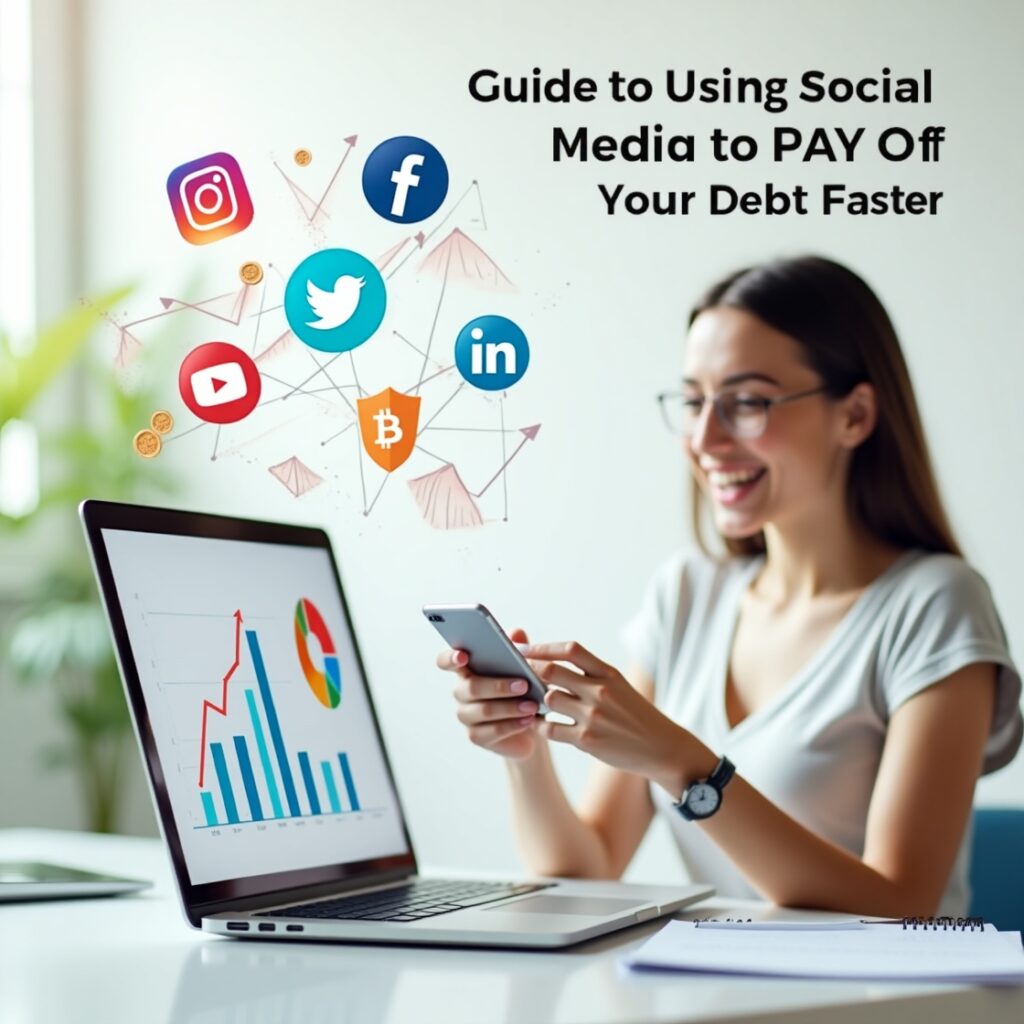Guide to Using Social Media to Pay Off Your Debt Faster
With the advent of the digital age, the role of social media has expanded. Social Media was originally only used to share photos and chat with friends; now it amuses the masses for knowledge, networking, marketing, selling, and even income. Without assistance, social media can even be utilized to accelerate the path towards financial freedom-just from paying off debts! This book will delve into the practical methods through which social media can assist you in settling your debt in less time while interposing some working techniques with some timely dosage of motivation. Why Social Media is a Powerful Tool for Debt Repayment Most of the time, when debt repayment gets to act, people think about budgeting, reducing expenses, or maybe another job. While these are all beneficial, social media adds another dimension: Used wisely, social media can truly become that buying and saving tool. Step 1: Choose the Right Platform Every social network comes with different kinds of visibility. Your goals and skills will decide which will work best. Select a platform or two based on your comfort and where your target audience hangs out. Step 2: Document and Share Your Debt-Free Journey Sharing your own debt payoff journey on social media is highly effective; it draws audiences in, makes them participate, and can turn opportunities into money. What You Can Post: – Amount of debt and payment goals per month – Tips or challenges with budgeting – Side hustle concepts and updates – Debt updates on a monthly or weekly basis – Emotional peaks and troughs – Tools and apps you use Why It Works: Real-life influencers like @DebtFreeGonnaBe and @HisandHerMoney began by simply chronicling their lives, later evolving into ventures. Step 3: Join and Engage with Financial Communities There are I don´t know how many groups on Facebook, forums on Reddit, or common Instagram pages are dedicated to the topics of financial freedom and accounting for debt. Benefits: Some larger communities are: Be genuine in engaging-back with questions and your own progress-to build trust and learn faster. Step 4: Monetize Your Social Media Presence Once you begin to consistently share valuable content, you will be presented with a myriad of ways to monetize your content to use for debt repayment. 1. Affiliate Marketing Promote products or services you really use (such as budgeting apps, personal finance books, or cashback tools), and earn a percentage of sales when someone signs up through your link. Some good starters can be: 2. Sponsored Content Then you can start making money off product placements, bank promotions, or ads for this new savings app when companies start paying you once you start attracting a decent audience. Ensure that your promotions align with your core mission and are fully transparent. 3. Digital Stuff Sell digital stuff to your audience! Some examples might be: 4. Freelancing on Social Media If you have skills to sell (writing, graphic design, virtual assisting..), showcase them on LinkedIn, Instagram or Twitter, and get paid directly. Use a “Hire Me” highlight or pinned post. Step 5: Use Social Media Marketplaces to Sell Unwanted Items There are still items in many homes that could be sold for a small price. So selling on platforms such as Facebook Marketplace or Instagram Stories or local community groups would give you some pocket money toward your debt. Tips: Just a little cash from decluttering can build up into big debt payments over the long term. Step 6: Start a Side Hustle Through Social Media Social media can be the medium to advertise a side hustle, from freelance work to selling products. Top Side Jobs on Social Media: Using free tools like Linktree or Beacons to connect your services can keep it easy for potential clients to find, and also be professionally presented. Step 7: Set Financial Goals and Celebrate Milestones Online One way to encourage commitment and build an engaged audience is by setting visible goals and sharing one’s progress. Ideas to use: This will keep everyone motivated and cultivate trust and loyalty between you and your followers. Step 8: Keep It Real; Stay Away from Debt-Shaming Culture On the one hand, social media culture can motivate. On the other hand, it can be a ground for comparing, or worse, judging. Stay true to yourself when producing content. Do: Don’t: Your honesty will carry more weight than any pretense ever could. Step 9: Avoid Social Media Traps That Cause Overspending While saving and earning on social media, be wary of negative influences: Put boundaries on the way you’re engaging with social media: Conclusion Used in worse ways, social media may be an obstacle in fast-tracking your debt-free journey. Side-hustle sites, community support programs, accountability channels—it’s one big tool kit for manifesting your hard-money goals. Meanwhile, the intention lies in the medium. More creation than consumption. Serving before selling. Being real versus putting up a facade. Raise those student loans, pay down your credit card, finish that mortgage: social media can move beyond a distraction and be a facilitator of financial advancement.

